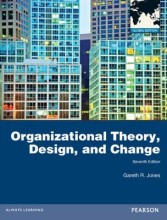Leveraging (information) technology for innovation and organizational learning
7 important questions on Leveraging (information) technology for innovation and organizational learning
The nature of organizational learning=>
Factors affecting organizational learning
- Theory Nystrom & Starbuck
- factors that distort managers’ perceptions and flow
Improving decision making and learning
- Strategies for organizational learning
- Nature of the top- management team > figure 12.5 blz. 379
- Heterogenous groups
- Devils advocacy and dialectical inquiry
- Collateral organizational structure
- Higher grades + faster learning
- Never study anything twice
- 100% sure, 100% understanding
Nature of the top- management team figure 12.5 blz. 379
1. Wheel (=organizational learning decreased. Works the best for simple problems)
2. Circle (=promotes organizational learning. Works the best for complex problems)
Devils advocacy and dialectical inquiry
- Rational approach
- Devils advocate => a person who is responsible for critiquing ongoing organizational learning
- Dialectical inquiry => teams of decision makers are used to generate and evaluate alternative scenario’s
Differences rational and Carnegie models of decision making:
- Information is available
- Decision making is costless
- Decision making is `value free’
- The full range of alternatives is generated
- Solution is chosen by unanimous agreement
- Solution chosen is best for the organization
- Limited information is available
- Decision making is costly (bv. Managerial costs, information costs)
- Decision making is affected by the preferences and values of decision makers
- A limited range of alternatives is generated
- Solution is chosen by compromise, bargaining, and accommodation between organizational coalitions
- Solution chosen is satisfactory for the organization
3 stages incremental decisions (same as in rational model)
2. Development stage
3. Selection stage
The question on the page originate from the summary of the following study material:
- A unique study and practice tool
- Never study anything twice again
- Get the grades you hope for
- 100% sure, 100% understanding






























